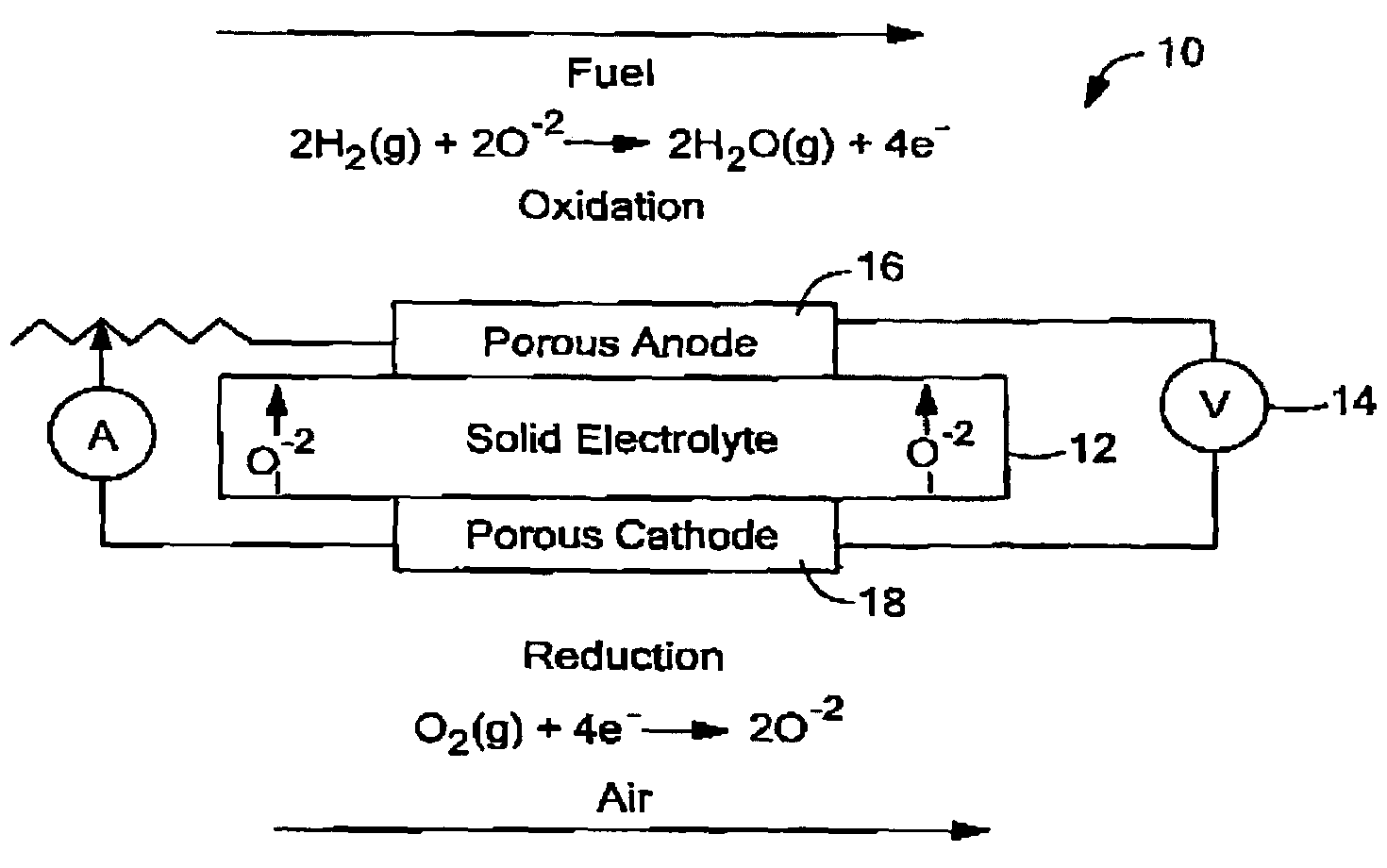Process for solid oxide fuel cell manufacture
a solid oxide fuel cell and manufacturing technology, applied in the field of solid oxide fuel cell manufacturing, can solve the problems of requiring several hours to sinter the electrolyte and electrode structure, affecting the commercialization of sofc devices, and affecting the quality of sofc devices, etc., to achieve the effect of convenient manufacturing of solid oxide fuel cells
- Summary
- Abstract
- Description
- Claims
- Application Information
AI Technical Summary
Benefits of technology
Problems solved by technology
Method used
Image
Examples
Embodiment Construction
[0021]The present invention provides a method for fabricating a solid oxide fuel cell (SOFC) in a single thermal cycle. This cycle can be performed as a batch or continuous process. An SOFC can be conveniently manufactured according to the invention at a cost that is less than five-hundred dollars per kilowatt of electricity. The manufactured SOFC also operates in a temperature range from about 700 to 1100° C. Similarly, the method of the invention can fabricate an SOFC stack in which several cells are arranged with interconnects separating each cell. Fuel cell devices manufactured by the disclosed method could be used to power, for example, aeronautical systems, computer devices, automotive systems and cellular devices.
[0022]Fuel cells offer an environmentally clean and versatile power source for efficiently converting fossil fuels into electricity and heat. FIG. 1 is a representation of an SOFC 10 comprising a dense electrolyte 12 that is positioned between porous electrodes, name...
PUM
| Property | Measurement | Unit |
|---|---|---|
| thickness | aaaaa | aaaaa |
| temperatures | aaaaa | aaaaa |
| thickness | aaaaa | aaaaa |
Abstract
Description
Claims
Application Information
 Login to View More
Login to View More - R&D
- Intellectual Property
- Life Sciences
- Materials
- Tech Scout
- Unparalleled Data Quality
- Higher Quality Content
- 60% Fewer Hallucinations
Browse by: Latest US Patents, China's latest patents, Technical Efficacy Thesaurus, Application Domain, Technology Topic, Popular Technical Reports.
© 2025 PatSnap. All rights reserved.Legal|Privacy policy|Modern Slavery Act Transparency Statement|Sitemap|About US| Contact US: help@patsnap.com



